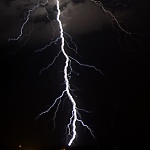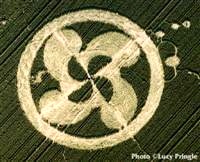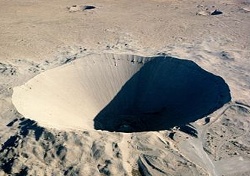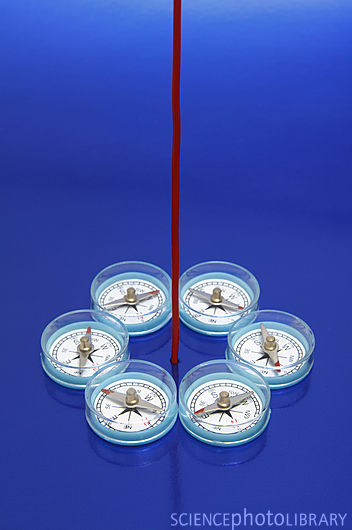Many informations about COVID-19, CORONAVIRUS, how will it spread into population
in many countries, actual COVID-19, CORONAVIRUS GRAPHS, also Perspectives, forecasts, outlooks for the future, epidemic and pandemic prognosis and actual
>>>>>> COVID-19, CORONAVIRUS PREDICTIONS <<<<<<
COVID-19, CORONAVIRUS links to GRAPHS day by day
COVID-19, CORONAVIRUS links to PREDICTIONS day by day
Other interesting COVID-19, CORONAVIRUS summary links and reference pages

Lightning discharges at the impact point create shock & pressure wave equivalent to an explosion

Crop circles
Crop Circles, Crop figures: pressure and shock waves
Long quotations (considerably more than only a few sentences) from domain cropcirclesonline.com also translated to any language, would be better publish anywhere with author's permission. Thanks.
Also copyrighted photographs ©cropcirclesonline.com ©quick spigots
Citations allowed, certainly. Name source, please. Also link where possible, thx.
Contact cropcirclesonline@gmail.com or lightningsymbols(at)hotmail.com

If interested, contact cropcirclesonline@gmail.com
Energetic effects of lightning discharges in crop circles
(a part of lightning discharge energy balance)
Basic parameters of "normal, classic", average lightning (negative, cloud to ground).
| Stepped leader | |
| Step length Step length | 50 m |
| Time interval between steps | 20 - 50 μs |
| Step current | >1 kA |
| Step charge | >1 mC |
| Average propagation speed | 200 klm / s |
| Overall duration | 35 ms |
| Average current | 100 - 200 A |
| Total charge | 5 C |
| Electric potential | ~ 50 MV |
| Channel temperature | ~ 10.000 K |
| First Return Stroke | based on measurements at the lightning channel base. |
| Peak current | 30 kA |
| Maximum current rate of rise | >10 - 20kA / μs |
| Current risetime (10 - 90 %) | 5 μs |
| Current duration to half-peak value | 70 - 80 μs |
| Charge transfer | 5 C |
| Propagation speed | 100 - 200.000 klm / s |
| Channel radius | ~ 1 - 2 cm |
| Channel temperature | ~ 30.000 K |
| Dart leader | |
| Duration | 1 - 2 ms |
| Charge | 1 C |
| Current | 1 kA |
| Electric potential | ~ 15 MV |
| Speed | 10 - 20.000 klm / s |
| Channel temperature | ~ 20.000 K |
| Dart-stepped leader | |
| Step length | 10 m |
| Time interval between steps | 5 - 10 μs |
| Average propagation speed | 1 - 2.000 klm / s |
| Subsequent Return Stroke | based on measurements at the lightning channel base. |
| Peak current | 10 - 15 kA |
| Maximum current rate of rise | 100kA / μs |
| 10-90 percent current rate of rise | 30-50 kA / μs |
| Current risetime (10-90 percent) | 0.3 - 0.6 μs |
| Current duration to half-peak value | 30 - 40 μs |
| Charge transfer | 1 C |
| Propagation speed | 100 - 200.000 klm / s |
| Channel radius | ~ 1 - 2 cm |
| Channcl temperature | ~ 30.000 K |
| Continuing current (longer ~ 40 ms) | About 30 to 50% of lightnings contain currents durations longer than ~ 40 ms. |
| Magnitude | 100 - 200 A |
| Duration | ~ 100 ms |
| Charge transfer | 10 - 20 C |
| M-component | based on measurements at the lightning channel base. |
| Peak current | 100 - 200 A |
| Current risetime (10-90 percent) | 300 - 500 μs |
| Charge transfer | 0.1 - 0.2 C |
| Overall flash | |
| Duration | 200-300 ms |
| Number of strokes per flash | 3-5 (About 15 to 20 percent of lightning flashes are composed of a single stroke). |
| Interstroke interval | 60 ms |
| Charge transfer | 20 C |
| Energy | 109 - 1010 J |
List of some physical properties of lightning discharge is included on page Physics
Wheat field - a record of the lightning magnetic field lines
Shocking, perplexing, surprising, difficult to believe, but also eye-opening similarity
Wheat field - record of magnetic field lines generated by the lightning discharge
Nearly one million Amperes (known school experiments - maximum 20 - 30 Amperes)


Exactly at the moment of the lightning discharge flow through corn stalks induced and conducted (ionized air, corona discharge) electric currents. Thanks to that stalks and other plant parts may exhibit electromagnetic properties. They may thus act like magnetized compass needles, and electromagnetic forces are momentarily deflecting them to the ground in a clockwise or counterclockwise direction, depending on the relative ratio, direction and phase difference of the passaging electric currents. Temporary mechanical changes and tensions may also create some meanwhile invisible mechanical damage, oriented in direction. Such microscopic directionally oriented damages are able by gradual growing of damaged tissues later cause gradual directionally oriented bending of all stalks in one direction (CW or CCW). Magnetic fields of an average lightning discharges are at least ten thousand times stronger than that of Earth's magnetic field. Another part of the work may be performed by enormous electrostatic forces thanks to that leaves and stalks of plants behave like leaves and stalks of electroscopes. Diameters of the circles approximately represent the range of the lightning discharge electromagnetic forces. In addition to all that, however, the crop pattern occurs at least several days, sometimes up to several weeks after the lightning hit. It is because the affected plant tissues weaken very slowly, due to huge inertia and consequently very slowly ongoing changes in plants (EPP, Chronology). Because sometimes on the locality may take place very complex interferences and resonances, it may sometimes create a very intricate pattern. A single lightning discharge radiates energy to which the electric locomotive would travel thousands kilometers. Average (!) Discharge. (simplified explanation)
It was one of the greatest Natural joke - mystification, clever trick, by that was the Mother Nature kidding the whole perplexed mankind hundreds, thousands years.
With mentioned ideas is possible not agree, also possible protest against them, but it maybe really all that is possible to do with it or against it. So called Jerry Cimrman's postulate.
If interested, contact cropcirclesonline@gmail.com
Page under construction
Some partial information now may be found for example on certain summary pages. Crop Circles - understanding is now mainly one of the most extensive page. Another fairly comprehensive informations may be found on the links from the page Texts. There are links to some published texts. Also some unpublished yet, ie some preview version. Other unsorted tests are placed here. The texts will be of course added continuously.
Honored readership is hereby requested for a patience and grace. Some highly specialized pages are indeed in most cases quite extensively prepared, just waiting to definitive arrangements to the final form and publication. But some paragraphs, and a lot of information from them are already extensively preliminary involved in the content of some above mentioned summary pages. Even information from some rather specialized pages are very often quite extensively overlapping one another. Often they are not only interconnected by a reference, but rather for clarity at several near related pages are almost repeated or will be repeated. Therefore, on some of them they can already be present, on others not yet.
Some pages or their parts have also been preliminarily committed to publish somewhere else, so the first will appear there, then shortly they will be linked from the page Texts, and after some time will finally appear on the page for which it was intended.
Also, to almost all pages are prepared a series of accompanying photos or illustrative graphics, whether own creation, or "collected works" from the Internet. Such points, for placement of although existing, but still unplaced photos, are in the text very strongly colored thus marked. These are primarily designations for author of the text himself, do finally care to step to place them there. It is a gradual publication of research results. That research lasted for several years, so it will take some time yet. Frequently also happened, that in the course of writing some page was sometimes placed in its paragraphs a text, that should rather be included on another page, but so far has not been copied or moved there.
If interested, contact cropcirclesonline@gmail.com
This page was prepared, and all the facts and theories presented here were very thoroughly, closely and in detail experimentally examined by
Jan Ledecky


